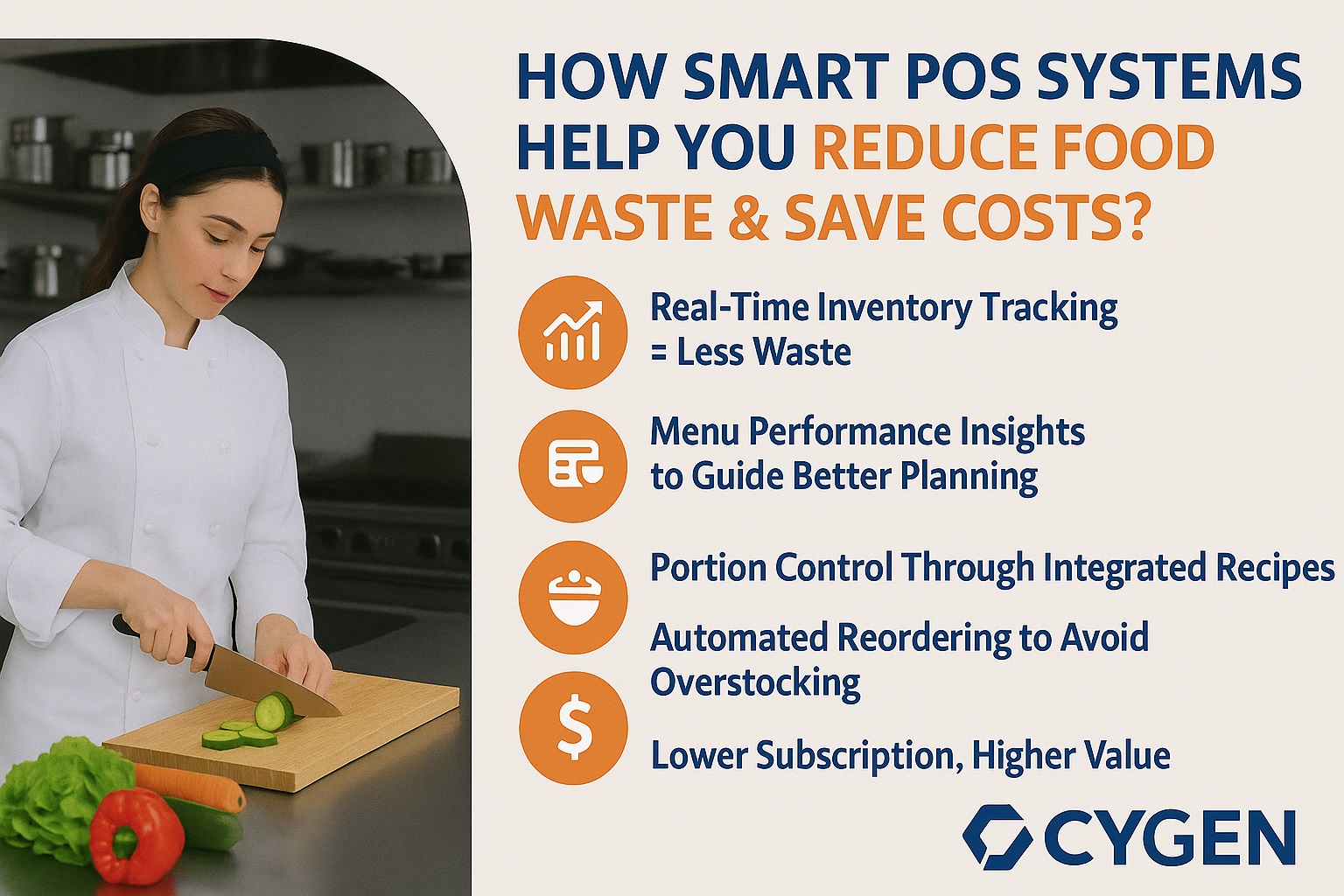Explore real-time inventory tracking, menu performance insights, and automated reordering features that help restaurants reduce waste and increase profits.
Food waste is one of the biggest challenges facing the hospitality industry, with Australian restaurants throwing away millions of dollars worth of food annually. Smart POS systems like CYGEN are revolutionizing how businesses manage inventory and reduce waste.
The Food Waste Crisis
The average restaurant wastes 15-20% of its food inventory, directly impacting profitability and environmental sustainability. Traditional inventory management methods often fail to provide the real-time insights needed to prevent waste.
Smart POS Solutions for Waste Reduction
1. Real-Time Inventory Tracking
CYGEN's advanced inventory system tracks ingredient usage in real-time, providing instant alerts when items are running low or approaching expiration dates. This prevents over-ordering and reduces spoilage.
2. Menu Performance Insights
Detailed analytics show which menu items are performing well and which are consistently wasted. This data helps restaurants optimize their menus and adjust portion sizes accordingly.
3. Automated Reordering
The system can automatically generate purchase orders based on usage patterns, seasonal trends, and upcoming events, ensuring optimal stock levels without excess inventory.
Cost-Saving Features
Portion Control Integration
Recipe management tools ensure consistent portion sizes, reducing over-portioning that leads to waste and increased costs.
Expiration Date Management
Track expiration dates and receive alerts to use items before they spoil. The system can suggest menu specials to move inventory that's approaching expiration.
Environmental Impact
By reducing food waste, restaurants using CYGEN's smart inventory features contribute to environmental sustainability while improving their bottom line. The average restaurant reduces waste by 25-30% within the first six months of implementation.
ROI and Savings
Restaurants typically see a return on investment within 3-6 months through reduced food costs, improved inventory turnover, and decreased waste disposal fees. The long-term savings often exceed the initial system investment by 300-400%.

